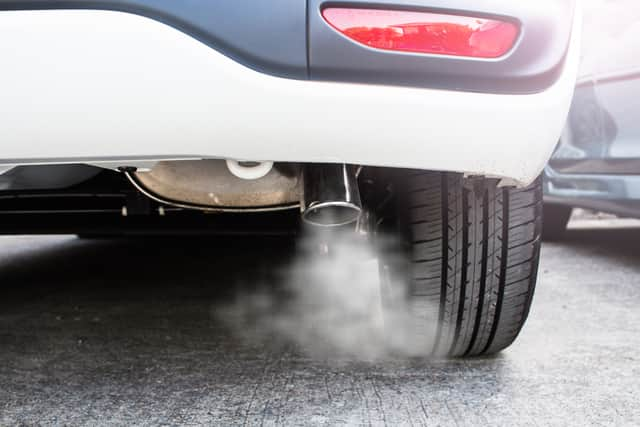‘Bounce back’ warning as CO2 emissions dropped in Glasgow in 2020
and live on Freeview channel 276
The research shows emissions were down 50% on 2006, however, Glasgow’s climate convener, Cllr Angus Millar, said there is “no room for complacency” against the threat posed by the climate emergency.
He said the city needs to minimise the ‘bounce back’ after the pandemic as much as possible.
Advertisement
Hide AdAdvertisement
Hide AdData on carbon emissions and energy consumption, from the Department for Business, Energy and Industrial Strategy, is released annually but two years in arrears.


It shows that Glasgow’s CO2 emissions in 2020 totalled 2,118 kilo-tonnes of carbon dioxide (ktCO2). In the same year gas emissions fell by 6% and electricity emissions dropped by 18% from 2019.
In a report, council officials said this is a “significant achievement” but comes with “strong caveats” due to covid’s impact on emissions. “It would be imprudent to assume these reductions will remain in 2021,” it added.
They have projected Glasgow could have reduced emissions, following a similar course to previous years, by 7.6% if the pandemic hadn’t happened.
Advertisement
Hide AdAdvertisement
Hide AdThe council, which has exceeded its target to achieve a 30% reduction in carbon emissions by 2020, from a baseline year of 2006, hopes to retain as much of the 13.3% drop in emissions from 2019 as it can.
Cllr Millar, SNP, said: “While these emissions reductions both citywide and for the council are encouraging there is no room for complacency.
“The climate emergency remains a very real and imminent threat and we, the council and city partners, will have to work harder, and smarter, to continue the downward trajectory and minimise the ‘bounce back’ in carbon emissions following the pandemic.
“We are making progress towards Glasgow’s ambition to be a net zero carbon city by the end of this decade, but we know we need to do more.”
Advertisement
Hide AdAdvertisement
Hide AdCarbon emissions in the transport sector dropped by 20% between 2019 and 2020 while there was a 16% fall in the industrial sector and 17% in the commercial sector. Reductions were also made in the domestic (6%) and public sectors (6%).
“As 2020 saw millions of people across the country working from home or furloughed and asked to stay home, the respective 16% and 17% drops in industrial and commercial emissions compared to the 6% drop in domestic emissions is reflective of this,” the council report added.
Reduction in gas emissions could indicate policies to retrofit Glasgow’s housing stock and expand district heating networks are seeing success, the council believes.
Electric vehicle charging increased by 124% in 2020 and, while rentals of standard bikes only rose by 0.6% between 2019 and 2020, rentals of E-Bikes rose by 336% during the same period, from 6,153 to 26,861.
Advertisement
Hide AdAdvertisement
Hide AdThe council also rolled out the Spaces for People programme, temporary travel interventions to ease physical distancing during the pandemic, in 2020. Many of these measures are now being made permanent which the council hopes will boost active travel. It is also progressing the city’s Low Emission Zone.
Cllr Millar added: “Our efforts to promote sustainable transport alternatives and increase natural carbon capture via tree planting, for example, will help change how Glasgow looks and feels as we move towards net zero.
“Similarly, our work to increase renewable energy generation, pursue innovative green infrastructure like district heating networks, and develop wide-scale approaches to retrofitting home energy will be critical.
“Now, as we look to secure a green recovery from the pandemic, is the time to pick up the pace.”
Advertisement
Hide AdAdvertisement
Hide AdThe council has cut its own emissions by 50.3% from a baseline in 2005/2006, with the greatest reductions made in electricity consumption due primarily to LED lighting installations, retrofits in buildings, street lighting and stair lighting. Electrification and replacement of the council’s fleet has also contributed.
Comment Guidelines
National World encourages reader discussion on our stories. User feedback, insights and back-and-forth exchanges add a rich layer of context to reporting. Please review our Community Guidelines before commenting.